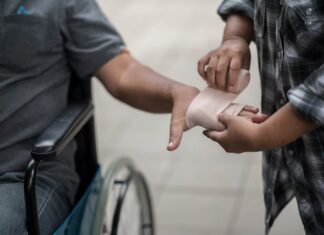Dubai is a city in the United Arab Emirates that is known for its modern architecture, luxurious shopping, and world-class attractions. However, the city has a rich history that dates back thousands of years. In this article, we will explore Old Dubai, the historic district of the city, and its significance in shaping the city’s identity.
Brief on Old Dubai
Table of Contents
Old Dubai is located along the Dubai Creek, which is a natural inlet that divides the city into two parts – Deira and Bur Dubai. The area is known for its traditional architecture, bustling souks (markets), and vibrant cultural heritage. It is a stark contrast to the modern skyline of downtown Dubai, which has emerged as a global business hub in recent years.
The history of Old Dubai dates back to the 19th century when the city was a small fishing village. At that time, the local economy was based on fishing, pearling, and trade. Dubai Creek played a vital role in this trade, as it served as a natural harbor that connected the city to other parts of the region.
In the early 20th century, the discovery of oil in the region brought about significant changes in the economy of Dubai. The city experienced rapid growth and modernization, which led to the development of modern infrastructure and buildings. However, the traditional character of Old Dubai remained intact, as it continued to be the cultural and economic heart of the city.
One of the key landmarks in Old Dubai is the Dubai Museum, which is located in the Al Fahidi Fort. The fort was built in the late 18th century and served as a residence for the ruling family, a garrison, and a prison before being converted into a museum in 1971. The museum showcases the history and culture of Dubai through a collection of artifacts, exhibits, and dioramas.
Old is Real Gold
Another significant landmark in Old Dubai is the Bastakiya Quarter, which is a restored historic district that dates back to the early 1900s. The quarter is named after the Bastak region in Iran, from where many of the merchants who settled in the area originated. The district features traditional wind-tower houses, narrow alleys, and courtyards, which provide a glimpse into the traditional way of life in Dubai before the oil boom.
The Dubai Creek is also a key attraction in Old Dubai, as it continues to be a hub of commercial activity. The creek is dotted with traditional wooden boats called abras, which ferry passengers between the two sides of the city. Visitors can take a leisurely cruise along the creek and experience the hustle and bustle of the traditional souks and markets that line its banks.
The souks in Old Dubai are another key attraction, as they offer a unique shopping experience that is a far cry from the modern malls that dot the city. The souks are known for their bustling atmosphere, traditional architecture, and an array of goods ranging from spices, textiles, and gold. The most famous souk is the Gold Souk, which is home to over 300 retailers selling a wide range of gold jewelry and other precious metals.
One of the most important events in the cultural calendar of Old Dubai is the Dubai Shopping Festival, which takes place annually in January and February. The festival is a celebration of shopping, entertainment, and cultural activities that attracts visitors from all over the world. The festival features a wide range of events, including live performances, cultural exhibitions, and fireworks displays.
Old Souk Dubai
Old Souk Dubai, also known as the Textile Souk, is one of the oldest and most traditional souks in Dubai. Located in the historic district of Bur Dubai along the Dubai Creek, the souk dates back to the early 1900s when it served as a hub for the textile trade.
The souk is known for its narrow alleyways, traditional architecture, and a wide range of textiles, including silk, cotton, and linen. Visitors can find a variety of fabrics, including colorful prints and intricate embroideries, as well as traditional Arabian clothing such as abayas and kanduras.
In addition to textiles, the souk also features shops selling traditional Arabian perfumes, spices, and souvenirs. Visitors can sample aromatic spices and try on traditional Arabian perfumes, which are made from natural ingredients such as oud, amber, and musk.
Best Tourist Destination
The souk is a popular destination for tourists and locals alike, as it offers a glimpse into the traditional way of life in Dubai before the oil boom. Visitors can haggle over prices with the friendly shopkeepers, who are always willing to offer a bargain.
One of the highlights of the souk is the traditional Arabian tea house, where visitors can relax and enjoy a cup of tea or Arabic coffee while admiring the views of the Dubai Creek. The tea house features traditional Arabian decor, including colorful carpets and cushions, and offers a peaceful oasis in the midst of the bustling souk.
The souk is easily accessible by public transportation, with the nearest metro station being Al Fahidi on the Green Line. Visitors can also take an abra, a traditional wooden boat, across the Dubai Creek from the Deira side to the Bur Dubai side.
Conclusion
Another important event in the cultural calendar of Old Dubai is the Dubai International Film Festival, which takes place annually in December. The festival is a celebration of cinema and showcases the work of local and international filmmakers. It also includes workshops, masterclasses, and discussions that provide a platform for filmmakers and audiences to engage with each other.










